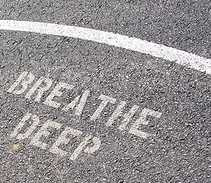The Eight Energies and the Five Directions
In Taijiquan we occasionally talk about the Thirteen Pieces of the Brocade. What's meant by that is the 8 fundamental energies(Ba Jin) that make up all of Taijiquan and the 5 directions or phases(Wu Xing). Originally these 13 ideas made up the original motions of the old Taijiquan, a set that has been expanded incrementally into the 108 motion form we practice today.
The eight energies may be called many things by different teachers. In my teaching they are called "jin", loosely meaning "power". Jin is a different kind of idea than Qi. Where Qi is a general idea encompassing energy that "can be seen only by it's affect on other things", Jin is much more specific and transient. The best example I have used is the feeling of standing in a river or stream and feeling a sudden upwelling of the current. It arises without warning from nowhere and as quickly as it comes, it returns to nowhere. This is the core feeling of using Jin, it cannot be held or sustained, it comes from deep beneath your feet and once expressed disappears as you relax.
The 8 energies we will discuss in this blog are as follows:
Peng - Ward Off
Lu - Rollback
Ji - Press
An - Settle
Cai - Pluck
Zhou - Elbow
Kao - Bump
Lieh - Split
Like all good things in Taijiquan these names are images and ideas that do not so much reveal the nature of these energies as hint at them. In the next article I will explore these 8 kinds of Jin in depth from my first hand experience with them in Taijiquan.
The 5 phases are another important concept used not only in Taijiquan, but in other internal styles, most notable of course being Xingyiquan. The 5 phases detail the relationship of the basic elemental phases as they relate to each other in the natural world. These 5 archetypes are symbolic for everything from technique, to personality, to flavor and constitution.
The 5 phases are as follows:
Water
Wood
Fire
Earth
Metal
In future articles I will discuss the various meanings and associations of these elements, how they are arranged, and how the energy moves from one to the other.
Understanding and applying these concepts to your practice are essential in bring the magic and power of Taijiquan out from a series of otherwise simple movements and breathing exercises. The process can be daunting to be certain, however the fruits of your effort will bear again and again through your practice and daily life.

